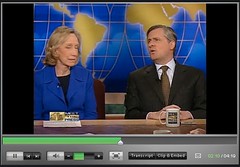…And How To Fix Them
I went to SxSW this year and attended half a dozen panel discussions. I also just returned from the Custom Content Conference in Nashville, where I attended one panel. Quite frankly they all sucked. Don’t get me wrong, they all had extremely high caliber talent sitting on the stage. Every panel had huge potential for real discussion with powerful market leaders. And every panel fell short! Way short.
Here’s the main problem with panel discussions: they’re not discussions at all. Here’s the definition of a discussion:
noun – an act or instance of discussing; consideration or examination by argument, comment, etc., esp. to explore solutions; informal debate.
There you have it. The key here is that you must (by definition) consider or examine a real issue and look to explore solutions as part of an informal debate. Every panel I’ve been to in the last three weeks missed this crucial point.
I know that moderating a really valuable and compelling discussion is an art and a science. It’s not easy. That being said, there are plenty of great examples of well-executed panel discussions on television today. Just watch the Sunday morning network news shows like Meet The Press or This Week. Even PBS’ Newshour has a regularly scheduled panel discussion at the end of every episode.
Let’s Break It Down
I watched Meet The Press last weekend and created a couple of key takeaways from a short debate that centered around Sarah Palin and the Tea Party movement. You can watch it here.
- Start with a little background (keep it short and focused)
- Launch a controversial question
- Make sure only one person speaks at a time
- Keep the conversation on track and help the debate evolve
- Let the debate roll when it’s working
- Know when it’s time to move on
Applying The Television Format to a Conference Panel
Let’s assume you’re the moderator for an hour-long panel discussion. Here’s how I believe you can create a powerful, exciting and smart discussion that adds tremendous value to your audience.
Skip The Intros
Introductions waste a HUGE amount of time in panel discussions. Just assume you have four panelists and give them five minutes each to introduce themselves. That’s already twenty minutes of your discussion gone. Intros add very little value to the audience. I haven’t been to a conference yet where each panelist’s bio isn’t available in the conference program. You DO need to introduce everyone, but do it like they do on television: introduce each guest in a couple of lines that sum up what makes them relevant to the discussion. Keep your panel introductions to less than a minute per panelist. To be frank, anyone in the audience can Google your panelists to find out more.
Pick a Big Issue
When you’re organizing your panel, choose a big issue that everyone’s facing as the theme for your discussion. Ask a big question at the outset that you’re all hoping to answer by the end of the hour. For example, at the Custom Content Council panel they might have focused on trying to answer a fundamental question like “What’s the future of print?”
Break The Issue Down
In order to keep your panelists focused, you’ll need to break down your topic into three main questions that will be discussed for about fifteen minutes each. Then break each of those issues down into two sub questions. What you should end up with is a set of nine questions (all of which are provocative) that will structure your debate and help move you towards an answer to the main question.
Find the Right Panelists
Too many panel discussions are love fests. It’s a bunch of smart people stroking each other’s egos and agreeing on the softball topics thrown their way by the moderator. With your questions in hand, you need to find four panelists that have very different takes on the answers to your questions. You need to know their positions (in principle) before the panel discussion is announced. How boring would Meet the Press be if they didn’t have two Democrats arguing with two Republicans on every single issue? No one would watch.
Map your Format and Keep Time
Here’s what you’ve got:
00:00 – 00:05 Brief Introductions
00:05 – 00:20 Issue Number One
00:20 – 00:40 Issue Number Two
00:40 – 00:55 Issue Number Three
00:55 – 01:00 Final Answers
This is a tight format. You’re running a television show and you need to act like it. Keep everyone on task and keep it moving. Make sure you have a watch or an audience member keeping time and giving you signals. This will make things move forward, instead of stagnating on one issue for too long.
Force Your Panelists to Keep Their Answers Short and Focused
Pacing is crucial to creating an invigorating discussion. If your questions are pointed enough you should be able to keep the debate moving. If someone’s hogging time, you need to cut them off. If they start to veer off topic, get them back to it. Ask them to get to the point. That is, unless what they’re saying is gripping and furthering the overall themes. Your audience will love you for this.
The Bottom Line
At the end of a panel discussion, whether it’s on television or at a conference, I don’t think you’ll be able to actually solve the world’s issues (that’s really not the goal) but I do think that if you follow a real format your audience will have a much better idea of the different perspectives surrounding specific issues facing you and/or your clients. To me, that’s value.

